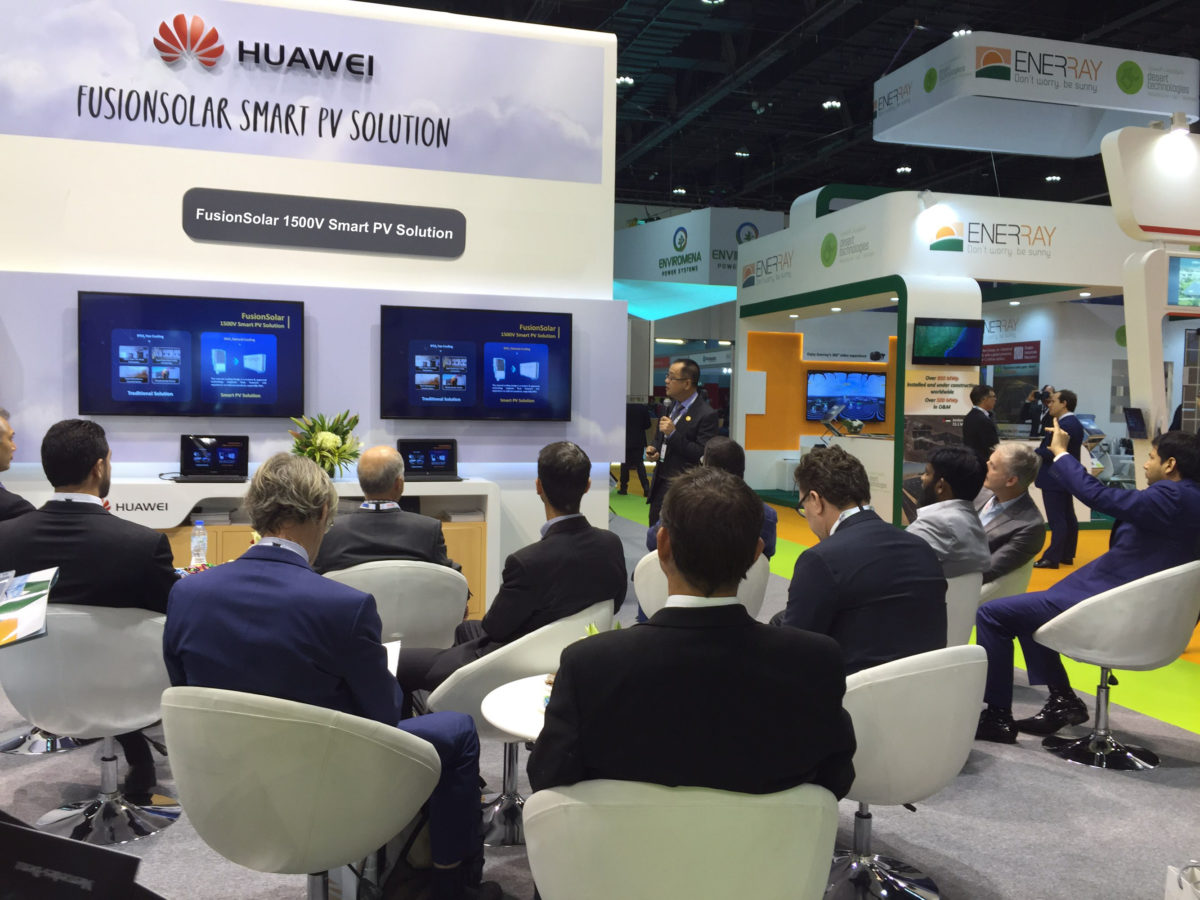The fact that Huawei offices and sales team are already established in these countries provides a good foundation to rapidly expand its PV business in these markets. With its new 1500V solution, Huawei is targeting large-scale PV installations, such as utility-scale PV power plants in desert regions in the Middle East and Africa. As Pan pointed out in his launch presentation, the new 1500V SUN2000-55KTL string inverter is ideally suitable for desert environments. Huawei’s unique “natural cooling” process does away with fans and other wearing parts. Besides, since it is not housed in an enclosure as in the case of the typical central inverter design, there is no need to include air conditioning to cool the inverter.
According to Pan, Huawei’s string inverter significantly improve power yields with several innovative features, like doing away with fans and air conditioning and cancellation of wearing parts, multi MPPT design, high EU efficiency of 98.8 percent, as well as the low failure rate. Besides, such features can greatly reduce OPEX of PV plant.
Huawei’s strong background as an ICT supplier has made a high level of equipment availability a company-wide standard. Its deep ICT know-how help Huawei build more robust inverters. A case in point is its long experience in developing very robust Remote Radio Units (RRUs) for the telecommunications sector. Pan mentions this track record in RRU development help Huawei build fully-enclosed inverters. Sand and dust can impact the electrical performance and also trigger fires in PV power plants. Huawei’s full-enclosure design is able to withstand the harsh sand storms encountered in many parts of the MEA region.
Another unique feature of the 1500V inverter is the IP65 design. Huawei is the first inverter manufacturer to offer a high-power inverter with IP65 compliance. The SUN2000-55KTL string inverter can operate well in high temperature in MEA region. As Pan explains, the embedded chipset has allowed Huawei to reduce the use of copper inside the inverter and make inverter’s design highly compact. The traditional 3-Level Topology modulation is replaced by a 5-Level Topology, further boosting the inverter’s efficiency. Pan predicts even more steps in future models, all with the goal of driving-up inverter efficiency and thereby plant yield.
Pan’s MEA team was established last year and we can expect Huawei to grow quickly in this region as well. Prior to launching the new 1500V solution, Pan attended the Seventh Session of the IRENA Assembly in Abu Dhabi earlier this week and came away very impressed by the level of interest and funding for clean energy and solar projects. We can expect a good portion of this interest and capital to be devoted to very reliable Huawei PV equipment and technology in the coming years.
This content is protected by copyright and may not be reused. If you want to cooperate with us and would like to reuse some of our content, please contact: editors@pv-magazine.com.



By submitting this form you agree to pv magazine using your data for the purposes of publishing your comment.
Your personal data will only be disclosed or otherwise transmitted to third parties for the purposes of spam filtering or if this is necessary for technical maintenance of the website. Any other transfer to third parties will not take place unless this is justified on the basis of applicable data protection regulations or if pv magazine is legally obliged to do so.
You may revoke this consent at any time with effect for the future, in which case your personal data will be deleted immediately. Otherwise, your data will be deleted if pv magazine has processed your request or the purpose of data storage is fulfilled.
Further information on data privacy can be found in our Data Protection Policy.